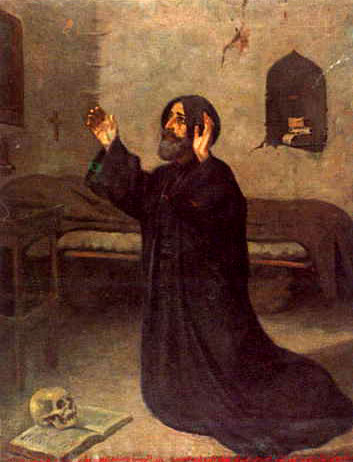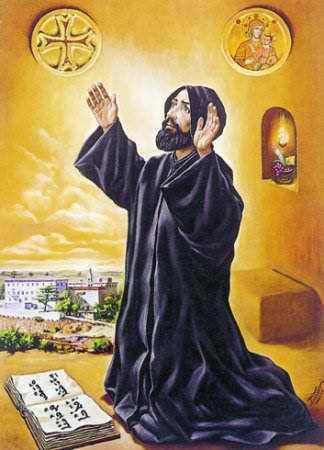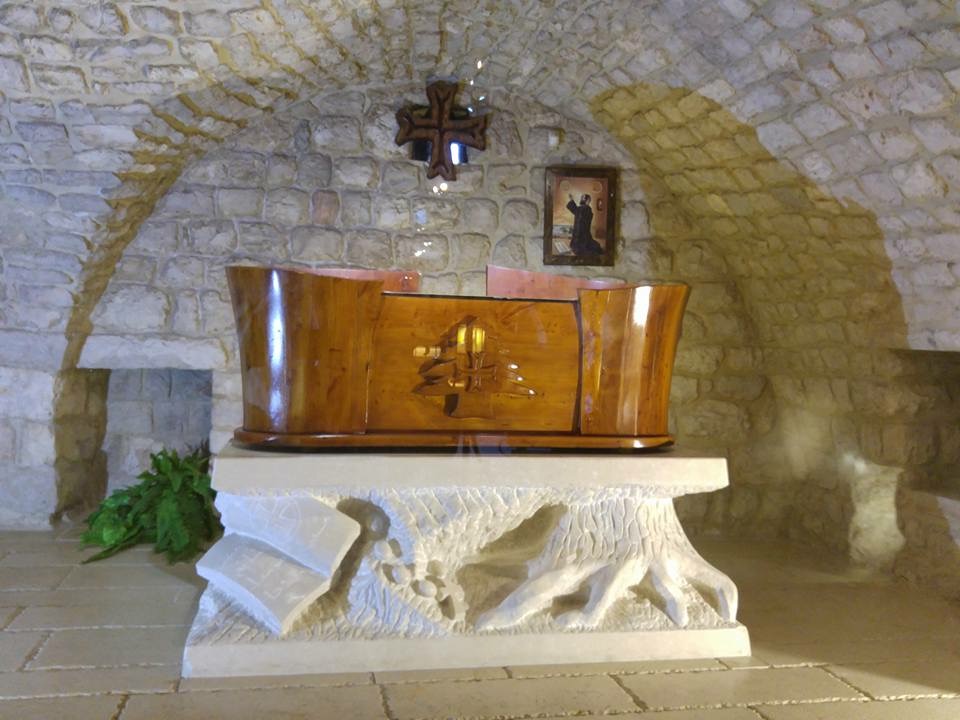“Those who struggle for virtue in community life, will have greater merit.”
Youssef Kassab was born in Hardini, Lebanon, in 1808, as the son of George Kassab and Marium Raad.
As a child, he was strongly influenced by the monastic traditions of the Maronite Church. 4 of his brothers became priests or monks. He in turn, attended a religious school and studied under the monks of the Lebanese Maronite Order at the Monastery of Saint Anthony, in Houb.
At the age of 14, he entered the Monastery of Saint Anthony in Qozhaya, and at the age of 20, entered the novitiate of the Order, taking the name of Nimatullah, which means, “the grace of God”.
As a new monk he was assigned to learn how to bind books and spent the period of his initial formation in the monastic life in frequent prayer, sometimes passing the night in prayer in the church, praying to the Blessed Sacrament.
After 2 years, he made his religious profession and was sent to the Monastery of Saints Cyprian and Justina in Kfifan, to pursue higher studies. He was ordained on Christmas Day in 1833.
He founded a free school for children in Kifkan and later in Bhersaf. He was also assigned by the abbot to teach at the order’s seminary and be the director of the seminarians. Among his students was Saint Charbel Makhlouf (https://real-heroes.org/saint-charbel/)
During the 2 civil wars of 1840 and 1845, he suffered greatly with his people. He observed that the ordinary, everyday life is a continuous martyrdom, since one must always be an example to others, guarding themselves from becoming a source of scandal or sin.
Kassab spent his entire life in prayer and the service of his order. He was on the general council for most of the period and also served as the Assistant Abbot General by appointment of the Pope. He refused, however, to be named Abbot General. His reluctance to assume positions of authority in his Order, came from his deep humility and his earnest belief that he was far from living in continual contact with God.
He was severe on himself, but a model of patience and forbearance to his fellow monks, to the point where he was reprimanded for his leniency. He bore all of this as part of the challenge of monastic life.
Throughout his life he had a special devotion to the Virgin Mary, his “Source of Strength”.
While he was teaching, he fell ill in the winter of 1858, and died on December 14 after suffering nearly 2 weeks from a high fever. He died holding an icon of the Blessed Virgin and saying, “O Mary, to you I entrust my soul”.
6 years after his death, his tomb was opened for re-burial and, to the surprise of the monks, his body was found to be intact, uncorrupted.
He is the patron saint of Beirut, Lebanon.
His feast day is December 14.
For God’s Glory.


